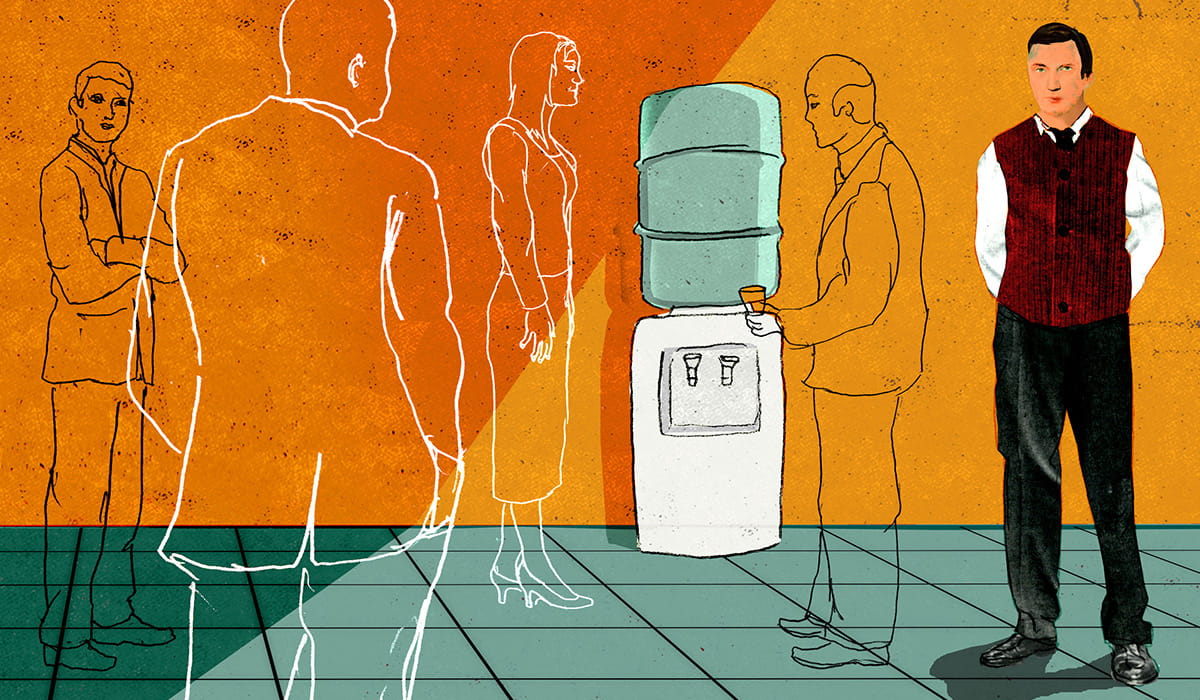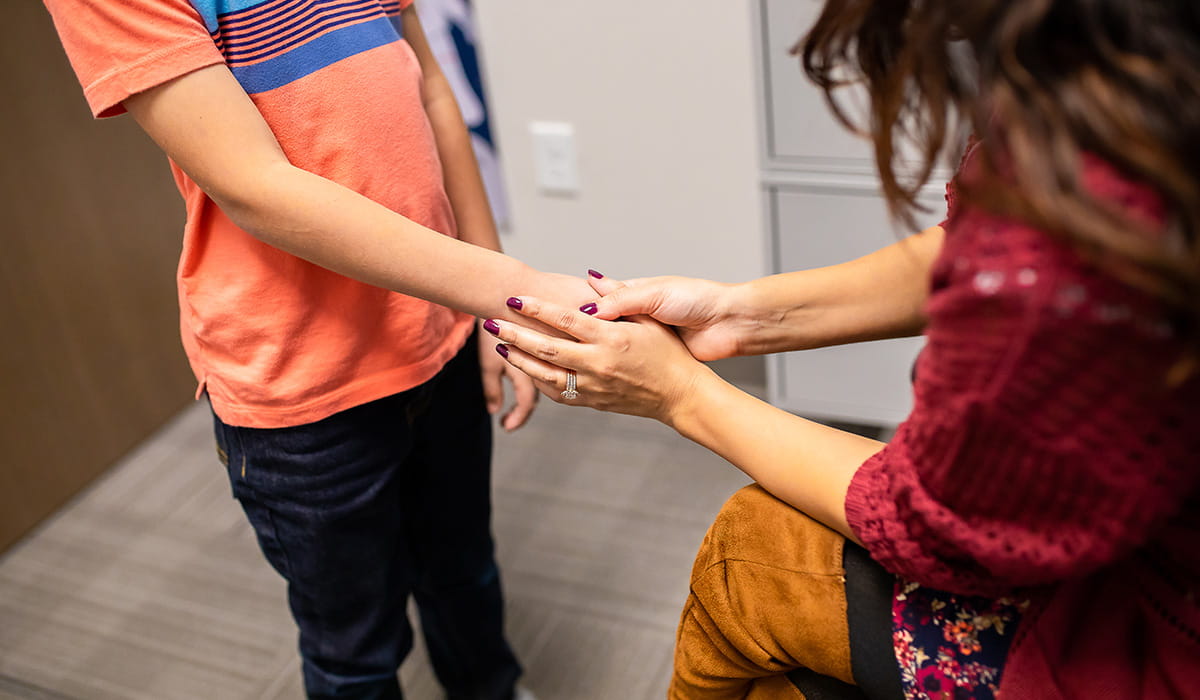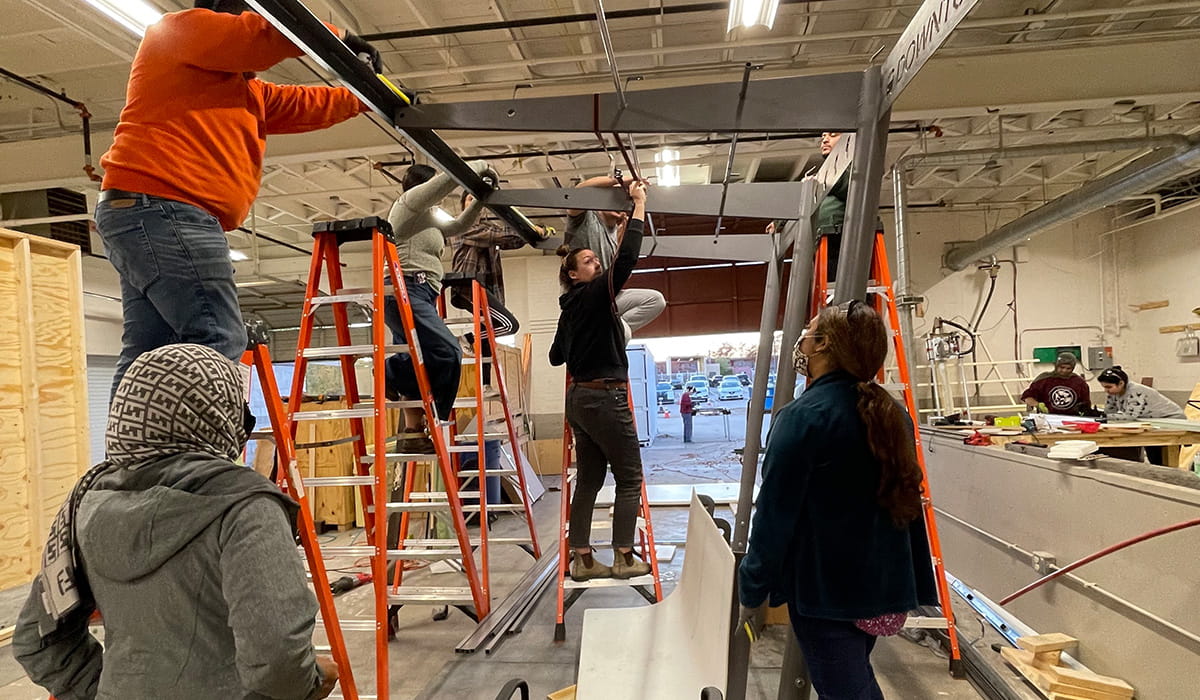Box 19162
Arlington, TX 76019-0162
Rebooting the Workforce
To help address rising demand for workers in everything from pediatric health care to K-12 math education, researchers at UTA are investigating innovative solutions for a workforce in transition.
By Linsey Nazir
At its peak, the COVID-19 pandemic shuttered hundreds of thousands of businesses, leaving nearly 30 million Americans unemployed. The ensuing shuffle—a complex reorganization of household incomes, personal priorities, employee benefits, and entrepreneurial endeavors—left the American economy with 10 million job openings.
In the last three years, the United States has lost millions of workers.
The U.S. Chamber of Commerce reports that companies of every size and every industry are encountering historic obstacles as they try to fill empty jobs. Some have turned to alternate solutions, such as robots to perform simple or repetitive tasks. Others have expanded employee benefits to include remote work, incentivizing their employees with a more flexible work-life balance. Still, among industries that require in-person attendance, workers are hard to find.
As a top supplier of talent, The University of Texas at Arlington is preparing its graduates to enter high-need industries and helping the nation overcome one of its greatest challenges. Researchers and creative scholars from a variety of fields are helping students transfer lessons from the classroom to the real world, training them for critical roles in health care, education, manufacturing, and more.

Providing Pediatric Care
This winter, the pediatrics center where Shazia Lackey (’19 MS, ’08 BS, Nursing) serves as a pediatric nurse practitioner had to stop accepting new patients. In the months prior, the office had received dozens of new patient registrations weekly. The staff was spread too thin, and demand had finally outpaced supply.
“There’s a shortage of trained pediatric care providers. It is hard to hire new providers and even harder to retain them,” Lackey says. “There are a lot of factors at play. Sometimes new providers aren’t ready for the workload, and on the other hand, veteran providers are burned out.”
It’s a problem that Kristen Gigli, assistant professor of nursing and a pediatric nurse practitioner, knows well. She is a member of the National Academy of Medicine’s (NAM) Committee on the Pediatric Subspecialty Workforce and Its Impact on Child Health and Well-Being. Among other topics, the commission is examining how gaps in the pediatric workforce may hinder outcomes for patients. Her research and experiences as an advanced nurse practitioner will advance national knowledge of the roles that nurses play in pediatric care.
Dr. Gigli notes that early exposure to pediatrics in school is key to increasing the talent pool. As UTA’s pediatric nurse practitioner program grows, for example, she sees strong partnerships forming between the University and children’s hospitals to match graduates to locations and specialties where the demand for care is high.
“We’re looking for long-term solutions to support access to high-quality care to advance the health of all children and youth,” she says. “It’s exciting for me to bring my expertise as a nurse practitioner to this report.”

For now, when job pressure mounts, Lackey finds hope in the healing that advanced nursing practice can provide to children in need. She credits a women’s health course taught by retired Clinical Assistant Professor Cheryl Gainer with building her strong foundational knowledge of a nurse’s role. Gainer, a certified nurse midwife, introduced her students to evidence-based care that examines patients holistically rather than focusing on a single symptom. She emphasized the importance of looking at a patient as an individual—to constantly be asking questions and evaluating their entire being, including physical, mental, social, and environmental factors, to promote wellness and prevent disease.
“When I worked as a registered nurse, I saw interventions and treatments that weren’t always helping children,” Lackey says. “I chose to become a provider because I want to give a different type of care and focus on the nursing goals of maximizing wellness rather than simply treating illness.”
Learning on the Job
When the assembly line broke down in the middle of Alyssa Hammonds’ shift as a controls engineer at an automotive manufacturing plant, she was alone. The junior computer science and engineering major had only been an intern at the company for a few months, but she was the most senior person available to respond, thanks to a shortage of workers.
“I was scared. There was no one to help me find a solution,” Hammonds says. “People were looking to me for the answer.”
Under pressure to restart production, Hammonds relied on the problem-solving skills she learned in UTA’s College of Engineering. Through trial and error, she closely examined the machine, discovering a worn part and a malfunctioning photo sensor. She requested a part replacement and reprogrammed three sensors. Within moments, the line was working.
Hammonds’ on-the-spot training helped her adapt to her new job quickly, but putting students in high-risk, high-pressure learning environments is less than ideal, says Shuchisnigdha Deb, assistant professor of industrial, manufacturing, and systems engineering. That’s why Dr. Deb is using virtual-reality technology to develop an immersive learning environment for students to better understand the field of additive manufacturing.
“It is academia’s responsibility to innovate pathways for our students to gain the knowledge and skills they need to be productive members of society.”
3D printing has become a $13 billion market, and its applications for manufacturing have increased the industry’s efficiency and sustainability. As additive manufacturing booms, producers have struggled to maintain the labor pool to sustain it.
“Existing and incoming employees lack the training they need to operate 3D printing equipment,” Deb says. “We need to make the shift to additive manufacturing swiftly and smoothly, but first we must get the American workforce up to speed.”
Additive manufacturing involves expensive equipment and materials; a single mistake could cost a company thousands of dollars in time and repairs. Using Deb’s realistic and immersive platform, students can gain confidence as they repeat a task many times without causing any damage to costly machinery.
Funded by an $837,000 grant from the National Science Foundation, Deb and UTA colleagues are developing a bilingual (English/Spanish) assisted virtual-reality platform. The team has partnered with Siemens to administer virtual training at the job site concurrently with classroom training on campus. The partnership will help them understand the best methods to assure the platform is applicable to the workplace.
Deb believes virtual learning environments are an essential development for higher education institutions.
“The pandemic taught us that flexibility in teaching modality is absolutely necessary,” she says. “It is academia’s responsibility to innovate pathways for our students to gain the knowledge and skills they need to be productive members of society.”
Solving the Teacher Shortage
Entering the 2022-23 school year, 45% of public schools reported difficulty in filling mathematics teacher vacancies, and 30% said that they were understaffed in that area, according to a national survey by the Institute of Education Sciences.
While this shortage has been significant for many years, the pandemic made it acute. Now, Christopher Kribs, professor of mathematics and curriculum and instruction, is using his knowledge and teaching skills to close the gap. He’s started by identifying two substantial challenges to teacher retention.
“People who become elementary school teachers for the most part have had very negative experiences in their own mathematical education, which they often pass on to their students,” says Dr. Kribs, who is also director of UTA’s graduate program in K-8 mathematics. “Another challenge is that despite research showing best practices for mathematics education, those practices are only implemented in a tiny percentage of classrooms.”
“We’ve had a wake-up call. It is hard to be a teacher. The field of education will be working through what we have endured with COVID for years. Developing structured support for our employees will help us recover and improve our work lives in the future.”
The key to a good mathematical education, Kribs believes, lies in shaping instruction around students’ own mathematical thinking. He cites research finding that K-12 students who were allowed to develop their own strategies to solve math problems made fewer errors later. But for teachers to instruct this way, they must first rewrite their own experiences as math learners, then learn to analyze their students’ thinking, then become familiar with the strategies K-12 students often develop.
So Kribs designed courses for future teachers to help them do just that. His “Math in Dual-Language Settings” class also prepares those who will lead dual-language classes for the approaches that students from diverse cultural backgrounds bring to the same problems. He advises his students to recognize that there can be multiple ways of solving problems and that embracing those differences actually makes the classroom community stronger.
Mathematics instruction isn’t the only challenge facing K-12 education. There’s also a distinct need for more professional development opportunities for teachers. In the wake of “The Great Resignation,” researchers have realized that employees need ongoing attention focused on how they are doing, how they are progressing in their careers, and how administrators can improve teachers’ experiences. Gathering that qualitative information will help researchers design immediate and structured support for teachers at critical junctures in their professional development.
“We’ve had a wake-up call. It is hard to be a teacher,” says Catherine Robert, assistant professor and co-director of UTA’s Center for Educational Research, Policy, and Practice. “The field of education will be working through what we have endured with COVID for years. Developing structured support for our employees will help us recover and improve our work lives in the future.”
Reviving Public Transportation
The pandemic had an immediate effect on the public transportation industry.
Almost overnight, restaurants, retail stores, and schools closed. As unemployment and remote work skyrocketed, the need for public transit plummeted. At its worst, national ridership dropped to 10% of average rates. Three years later, it still hasn’t fully recovered. To regain former riders’ trust and attract newcomers, transit agencies have focused new strategies on improving customers’ experiences.
In 2022, Dallas Area Rapid Transit (DART) contacted Julia Lindgren, assistant professor of architecture, for help redesigning its transit shelters. Lindgren’s work has historically focused on architecture and community engagement, with underserved groups placed at the center of design projects from which they will benefit. When she learned that DART was aiming to breathe new life into its bus system and create a product that was more responsive to riders’ needs, she put her advanced design students to work.

Over the next few months, the group conducted surveys of DART leadership, frontline workers, and riders to identify which parts of the bus system were working well and which needed improvement. Based on their input, the students redesigned the existing DART shelter and fabricated a new prototype.
“The academic-community partnership model works well because we are able to leverage the expertise and research of the University to bring focus to often overlooked real-world conditions.”
“This project challenged the class to create a flexible system that could adapt to meet varying rider needs,” Lindgren says. “It gave students the opportunity to partner with nonprofit organizations and think about how to invest additional beneficial qualities through public art and landscape at each bus stop to benefit and reflect the communities that they serve.”
Tasfia Zahin, a senior architecture student, said collaborating with DART helped her understand the design complexities of public transportation.
“We conducted a lot of research to try to get a broad picture of all the factors at play in Dallas’ bus system,” she says. “Taking our designs from paper to the public was an invaluable learning experience.”
Those learning experiences propelled Zahin to an internship with the city of Dallas, where she assists Council Member Jaynie Schultz with urban planning initiatives.
Hands-on experiences like the DART collaboration provide students like Zahin a head start in their careers.
“The academic-community partnership model works well because we are able to leverage the expertise and research of the University to bring focus to often overlooked real-world conditions,” Lindgren says. “It’s a win-win for the community and for students as they gain hands-on experience prior to graduating.”


